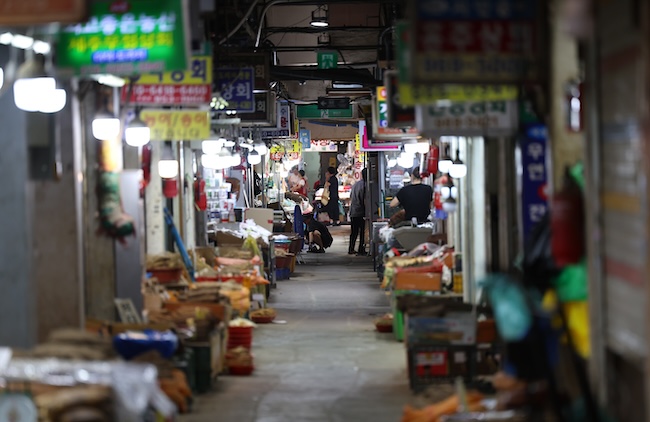
South Korea’s economy is showing signs of a downturn, with domestic demand struggling to gain momentum. (Image courtesy of Yonhap)
SEJONG, Sept. 3 (Korea Bizwire) — South Korea’s economy is showing signs of a downturn, with domestic demand struggling to gain momentum. Analysts attribute this trend to the reduction in household discretionary income, a consequence of high interest rates and inflation.
According to data from the Korean Statistical Information Service (KOSIS) released on September 2, the retail sales index (including restaurants, at constant prices) stood at 101.9 in July (with 2020 as the base year of 100), marking a 2.3% decrease compared to the same month last year.
This index, which includes restaurant sales, has been declining for 16 consecutive months since April of last year, the longest stretch since the start of related statistics in 2010.
The index, incorporating both retail sales and food service industries, provides insight into real consumption trends by encompassing household spending on goods and dining out.
A sector-by-sector analysis reveals that retail sales have been on a downward trajectory since September 2022, with only brief rebounds in June 2023 (1.4%) and February of this year (0.9%).
The food and beverage service sector has been declining since May 2023, following double-digit growth rates in 2022 as the country transitioned to treating COVID-19 as endemic.
The weakness in domestic demand is rooted in strained household finances. The Household Income and Expenditure Survey showed that the household savings rate – the ratio of surplus to disposable income – had fallen for eight consecutive quarters as of the second quarter of this year.

South Korea’s economy is showing signs of a downturn, with domestic demand struggling to gain momentum. (Image courtesy of Yonhap)
This indicates that interest expenses and consumption expenditures are taking up an increasing portion of household income, leaving less room for savings.
This cycle of reduced discretionary income leading to weakened consumption and, in turn, affecting household income, appears to be creating a negative feedback loop in the economy.
The recent economic indicators paint a concerning picture. The cyclical component of the coincident economic index, calculated by Statistics Korea, fell to 98.4 in July, a decrease of 0.6 points from the previous month.
This marks the fifth consecutive month of decline, with the current level being the lowest since February 2021 (98.2).
A score below 100 in this index suggests that the economy is performing below its trend. The index has remained under 100 for five months since February (100.1) of this year. Among the components of the index, those related to domestic demand showed particular weakness.
Despite these concerning trends, the government maintains that the economic recovery is ongoing, citing export performance and increased facility investment.
However, Joo Won, head of the Economic Research Office at Hyundai Research Institute, offers a more cautious outlook.
“The factor that could drive domestic demand recovery would be a preemptive interest rate cut, but this has been ruled out, with the earliest cut possible in October,” he said.
“Given the lag in the effects of interest rate cuts, the economy in the second half of the year may be more constrained than anticipated.”
M. H. Lee (mhlee@koreabizwire.com)






